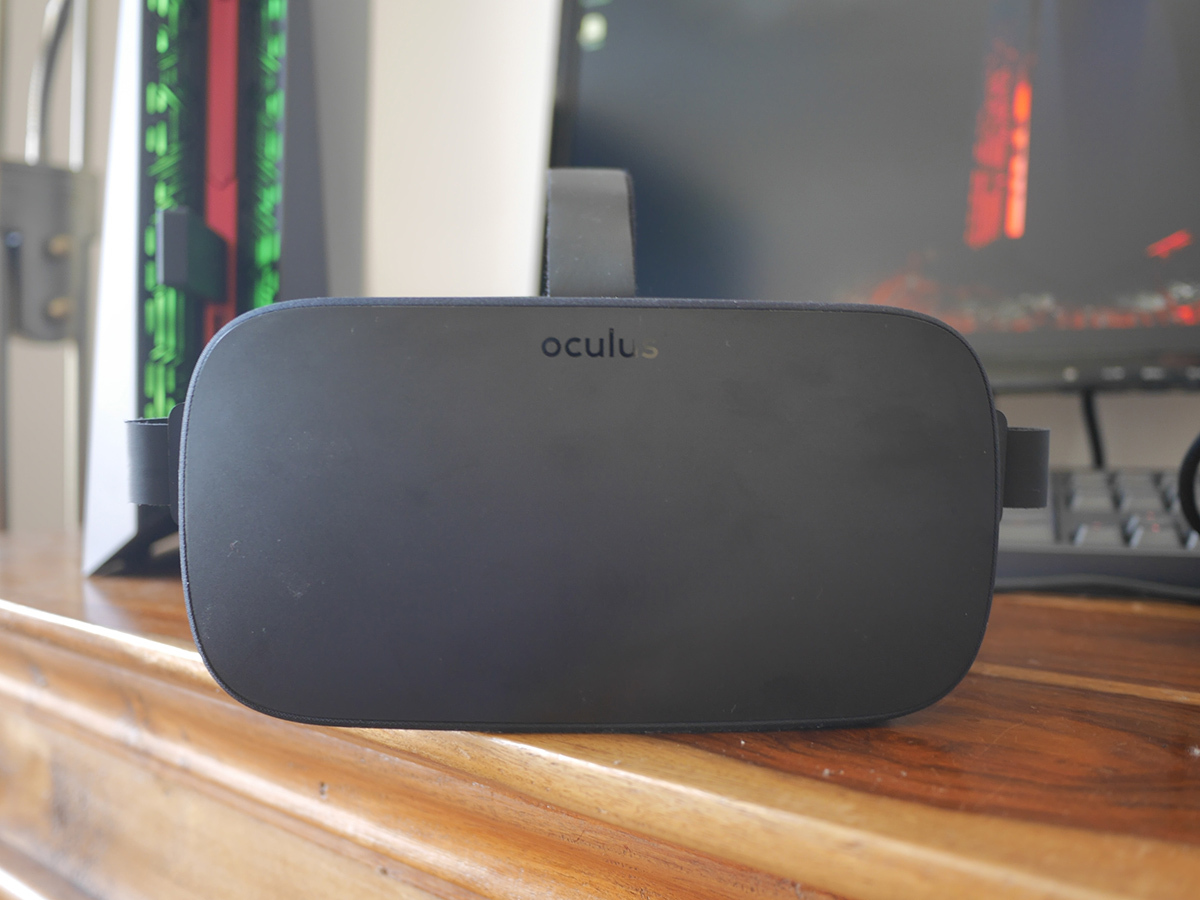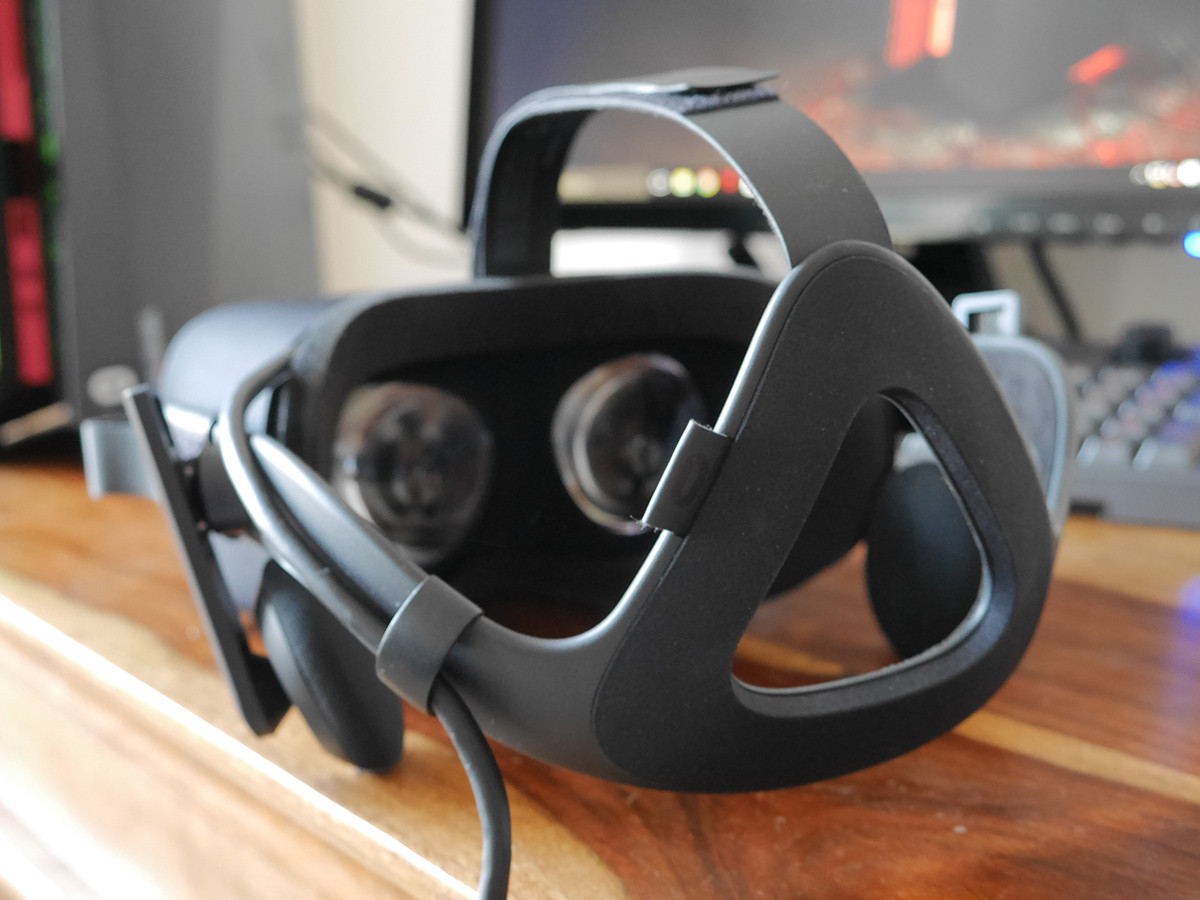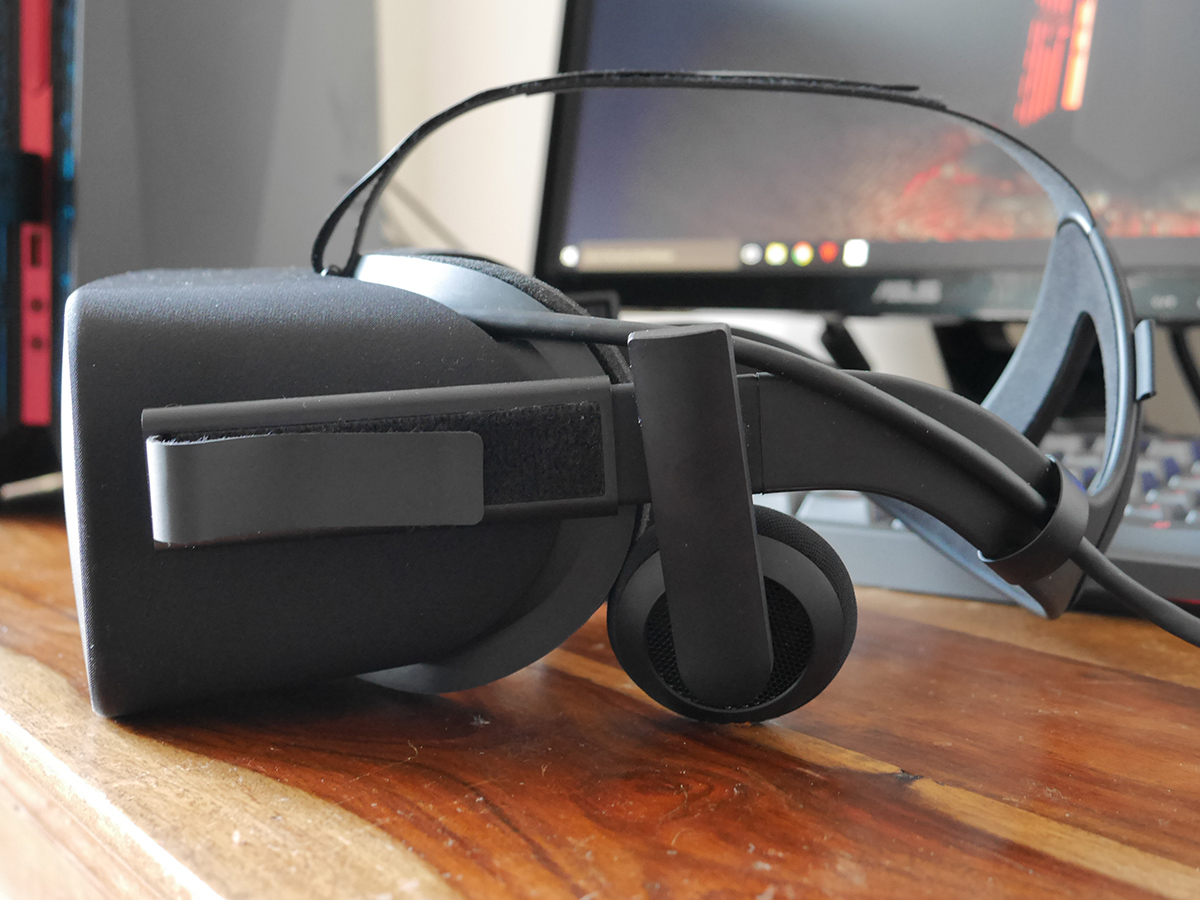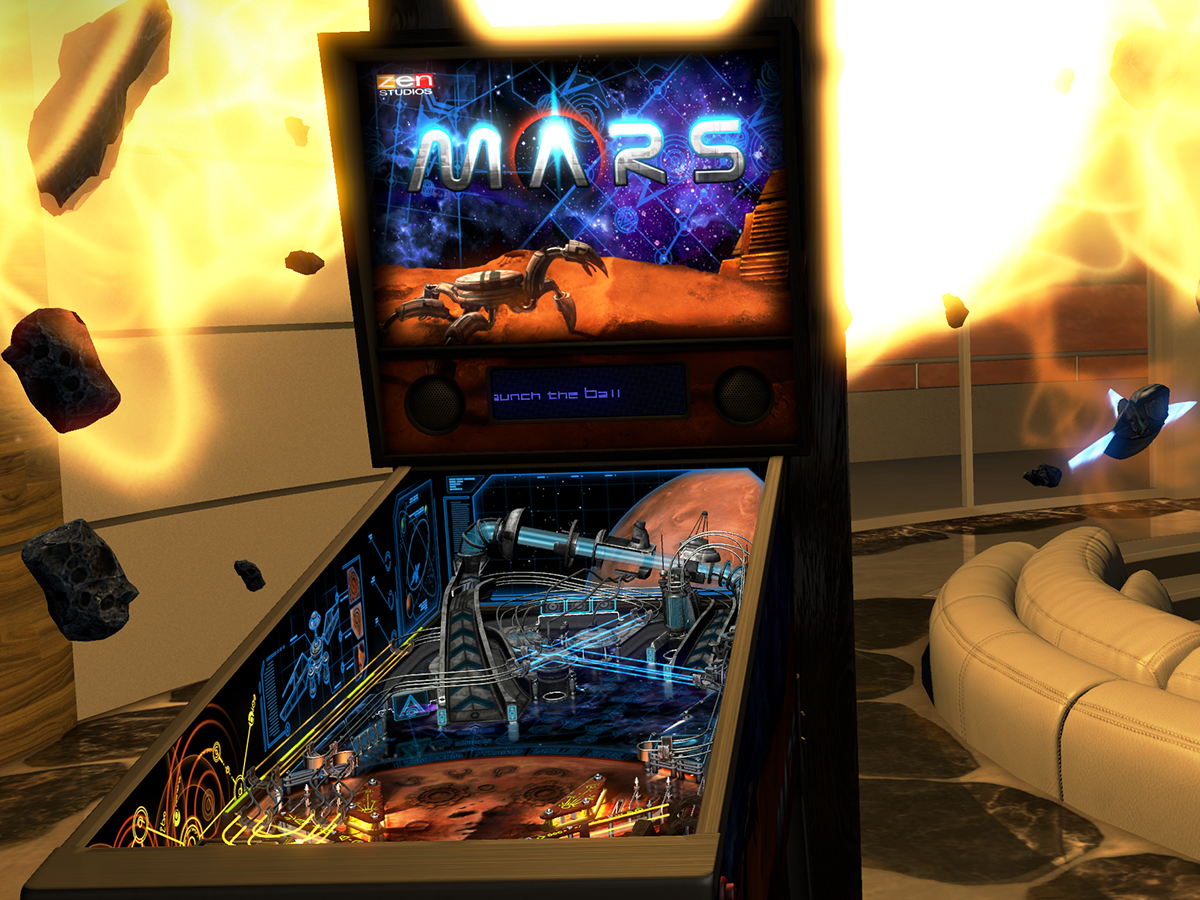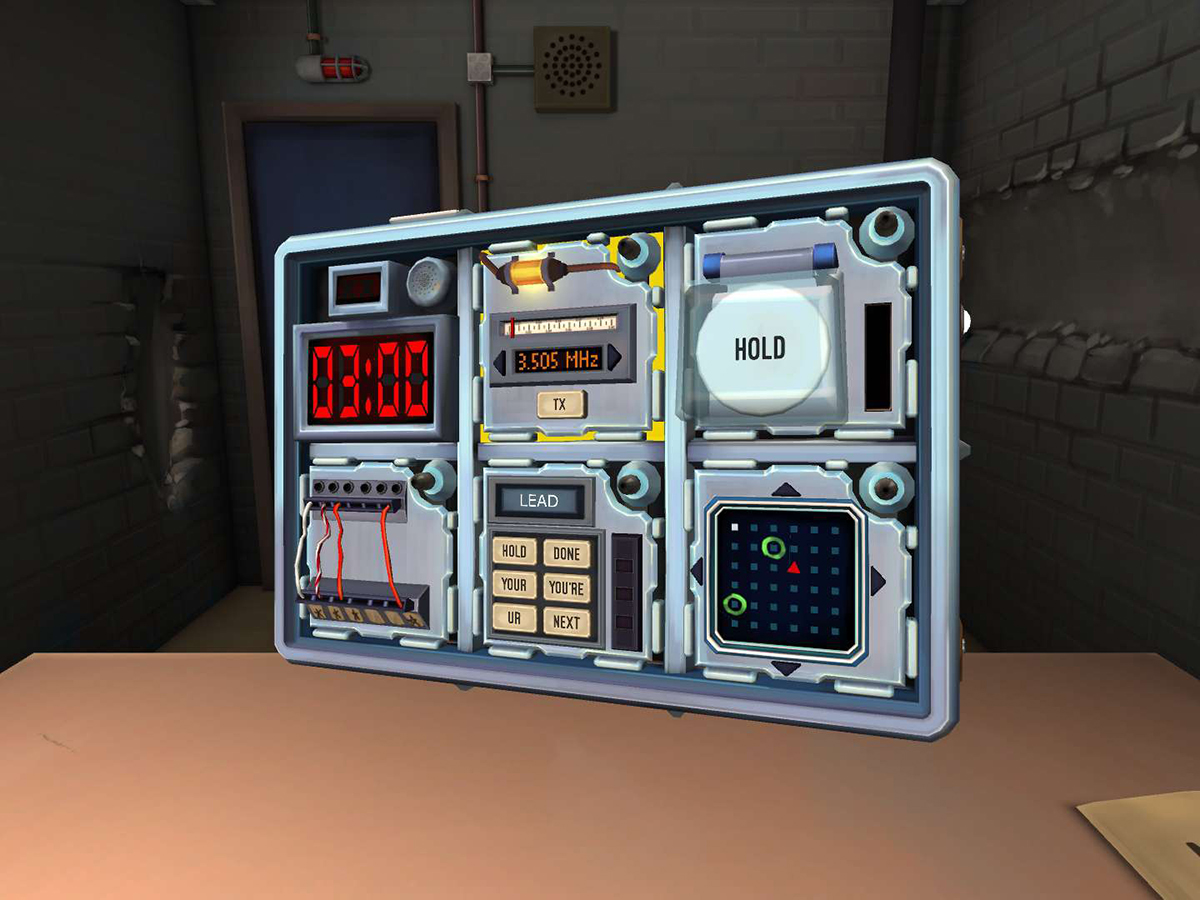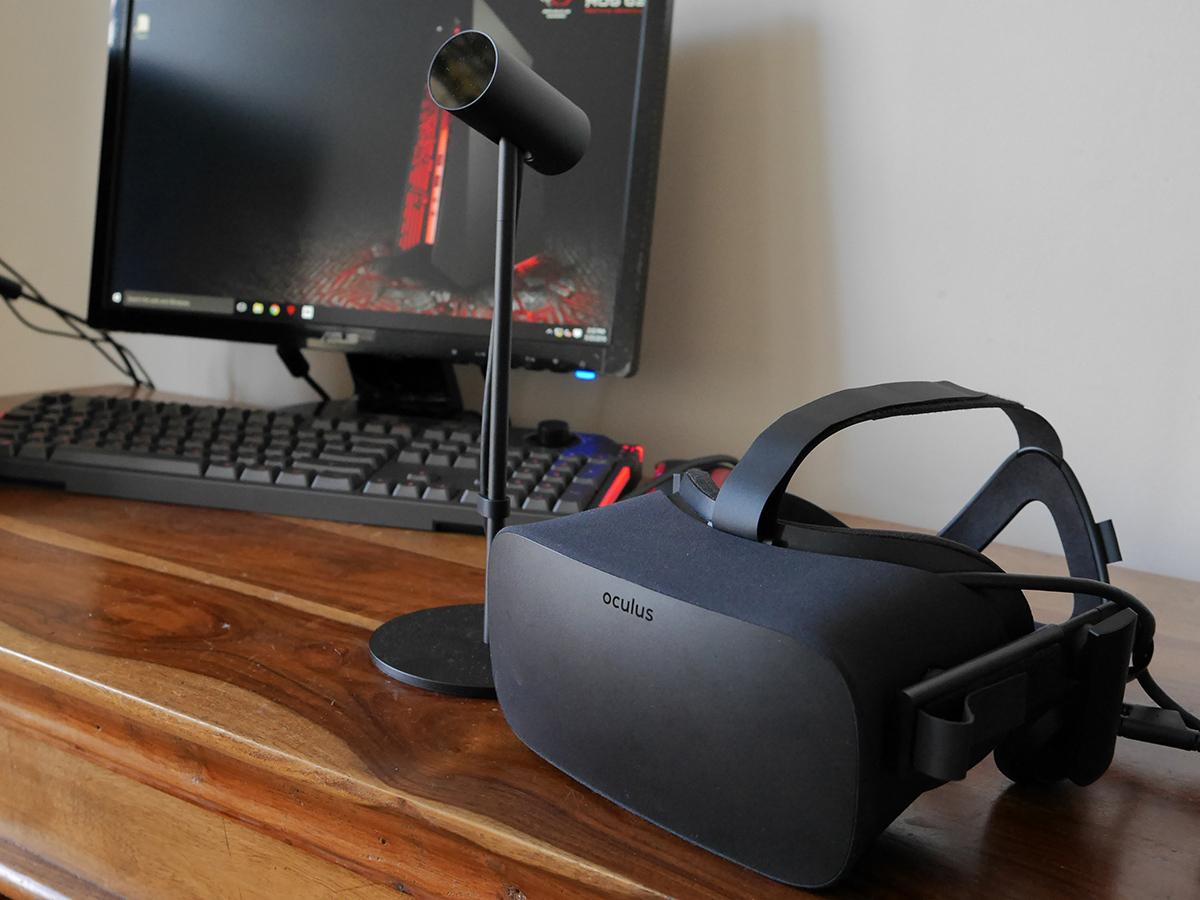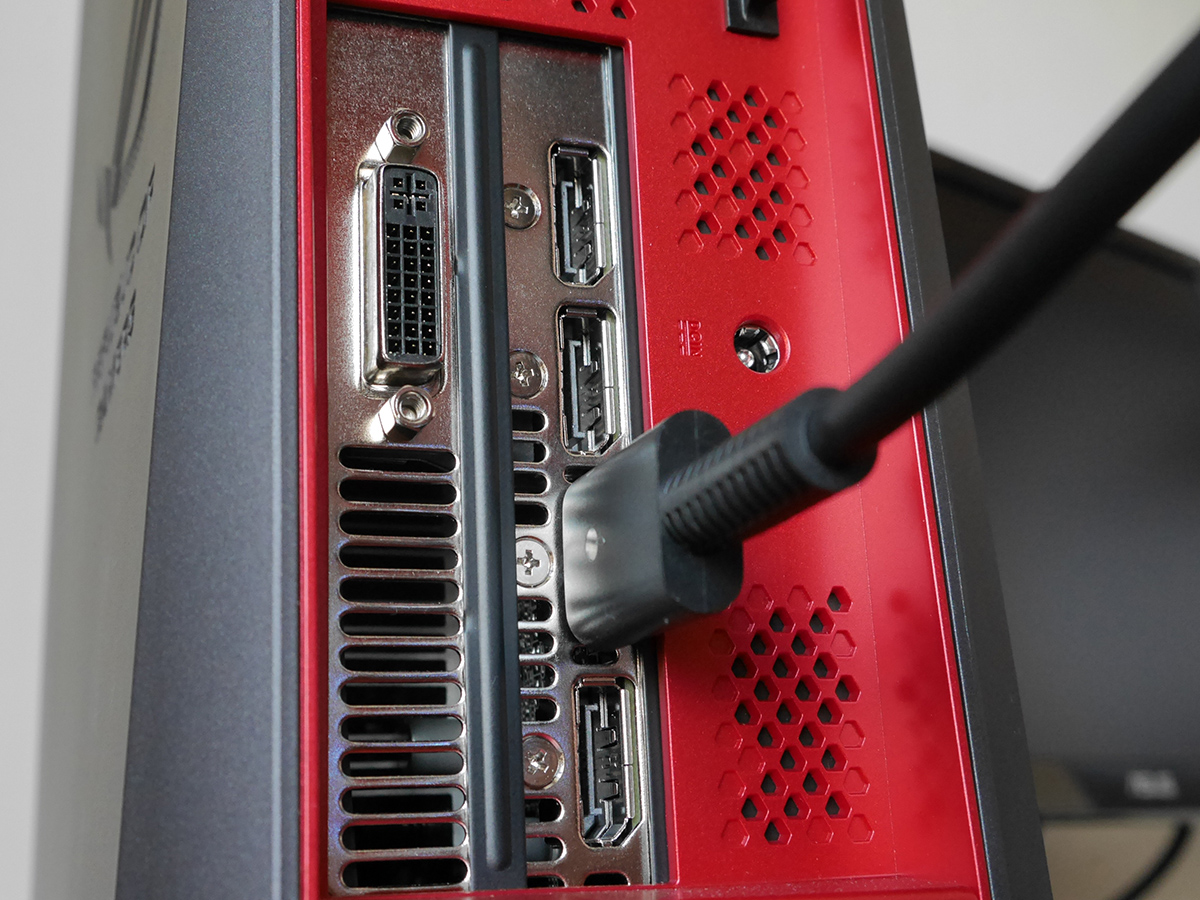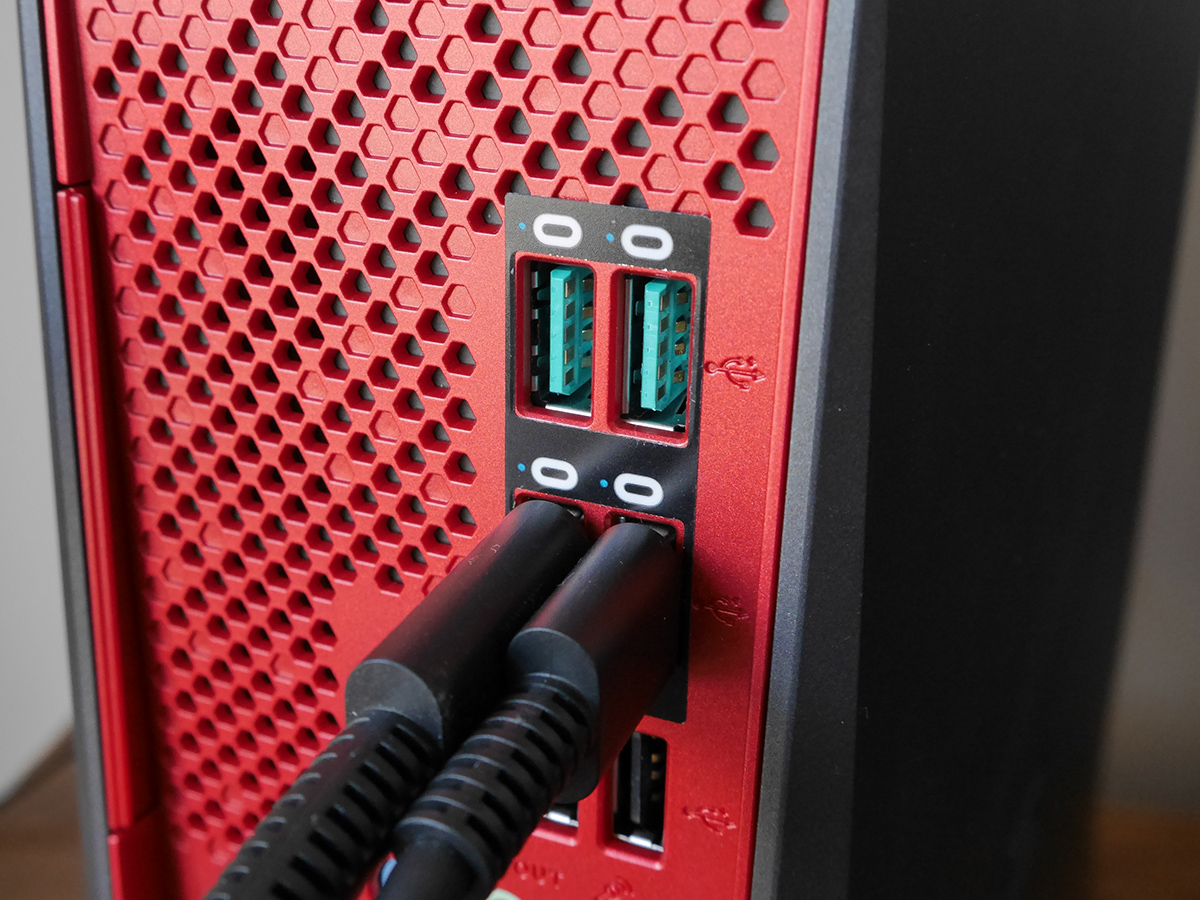Oculus Rift review
Virtual reality has arrived, courtesy of Oculus - you’re really going to want a Rift

Feel like you’ve been promised proper VR ever since the ’80s? Well, the wait is finally over.
Just let that statement sink in for a second. It’s OK to crack a grin. Forget smartphones and cardboard boxes; Oculus Rift is how virtual reality deserves to be experienced.
Oculus Rift is a window into untold flights of escapism. Just like the soon to be released HTC Vive and PlayStation VR, this headset offers the next evolution for games and films, with your movements tracked and translated from meatspace into the digital world. Nothing else shows you the world from an ant’s point of view one moment, and then lets you stomp over a city like a 100ft Kaiju the next.
Even more importantly, the Rift is the first VR headset to make it to the mainstream and really show what the tech is capable of. I’ve had its final incarnation strapped to my face for the past week, and I’ve barely taken it off. It’s one of the most exciting things you could hope to play with, and I say that as a grown-ass adult.
Somehow, I managed to unplug it just long enough to pen you a full review.
EYES ON THE PRIZE
The consumer version of Rift has come a long way from its boxy original prototype. That looked more like you were wearing a dustpan than a game-changing bit of tech – it clearly wasn’t ready for Joe Public to get his grubby mitts on it.
This model is a massive improvement – you could almost call it sleek, with fabric covering the front and rubber straps keeping it firmly on your picturesque mug. It’s a lot lighter now too; not so light that you’ll forget you’re wearing it, but enough that it doesn’t feel like a bag of flour strapped to your forehead.
Once you’ve fitted it for the first time, there’s enough slack to get the headset on and off without having to tighten and loosen the straps every time. The cushioned pads around the goggles create a comfortable fit around your eyes. It’s large enough that you can use the headset with glasses, but mine felt a little too squished up against my face. Popping in some contact lenses helped get rid of the feeling that I had my face in the jaws of a Venus flytrap.
A tiny switch on the underside of the headset lets you adjust the distance between the lenses to match your eyes. Physical adjustment works far better here than the software settings seen in the developer versions, so if things still look blurry it’s time to get your eyes tested.
Still, there is help at hand to make sure you focus correctly. A set of green crosses appear onscreen during setup to ensure you find a comfortable viewing distance. The screens are still sat a few inches from your face, mind – exactly what your mum always told you off for doing with the TV. Play for hours at a time and you’ll want a break.
The lenses can still fog up, even with a small gap near your nose to let air circulate better than it did on the prototype Rift. This only happened once, which I’ll blame on my panicked breathing after playing zombie-themed endless runner Into The Dead. A quick wipe with the bundled cleaning cloth dried things right up. My heart-rate, however, kept chugging on like a rocket-powered Orient Express.
Get gaming › The 10 best Oculus Rift games
GET READY TO PLAY
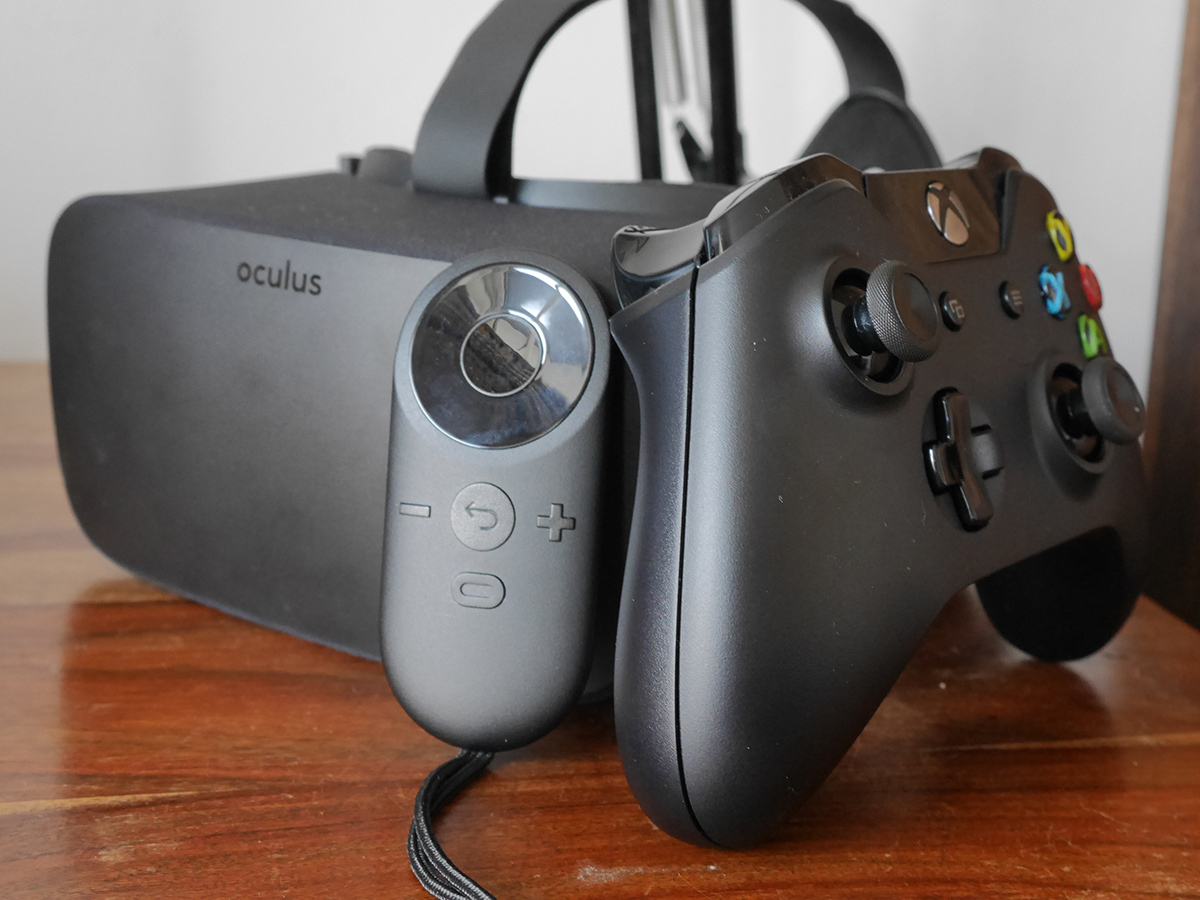
Want to experience these same palpations for yourself? It’s easily done. Hooking up the Rift and its webcam-style motion sensor to your PC is an amazingly simple process. All it involves is plugging in a few USB3.0 and HDMI cables, then you can dive straight into the future. Well, almost.
You’ve also got to plug in the bundled Xbox One controller’s Wi-Fi dongle and pair them together, but the setup software ensures this is a breeze. That said, seeing an Xbox pad staring up at you when you first open the box is a bit of a downer, and a reminder that the Oculus Touch motion controllers won’t be turning up until later in the year. Playing an early-access Lunar Lander sim and seeing a console controller rendered in VR just ruins any sense of immersion.
The Rift’s simple remote control also lets non-gamers get round the menus and controlling video playback. It’s got a watch battery inside and communicates with the Rift hardware, so won’t take up yet another of your PC’s precious USB ports.
Putting this in a VR newbie’s hand is a great way to introduce them to the tech – just make sure not to jump straight into something terrifying such as the marauding T-Rex demo. My housemate still hasn’t forgiven me.
Before you’re ready to get physical with the Rift, there is one final bit of preparation to undertake: clear some space around you. Oculus is better suited to sitting or standing than walking around the room, but the nature of VR means you inevitably move about. With no way to see the things around you, it’s better to be safe than to bring your PC crashing to the floor. It’ll also keep your shins free from bruises – something I learned the hard way by not moving my coffee table.
Unlike the Rift, HTC’s Vive has a built-in camera to avoid this kind of calamity: its Chaperone pass-through mode allows you to see the real world without pulling off the headset, and it has room sensors that create a virtual fence around you so you can tell if you’re going to walk into a wall. Having already tried Vive, my bruised kneecaps sorely missed these features.
Thankfully, the Rift’s headset cable is about 3m long, with more than enough flex to ensure you don’t trip yourself up when marauding around. After a day or two spent with the headset, I was stepping over the cable without really thinking – this innate sense of movement is probably the closest I’ll come to having Jedi mind powers.
The cheap Oculus › Samsung Gear VR review
PAY AND DISPLAY
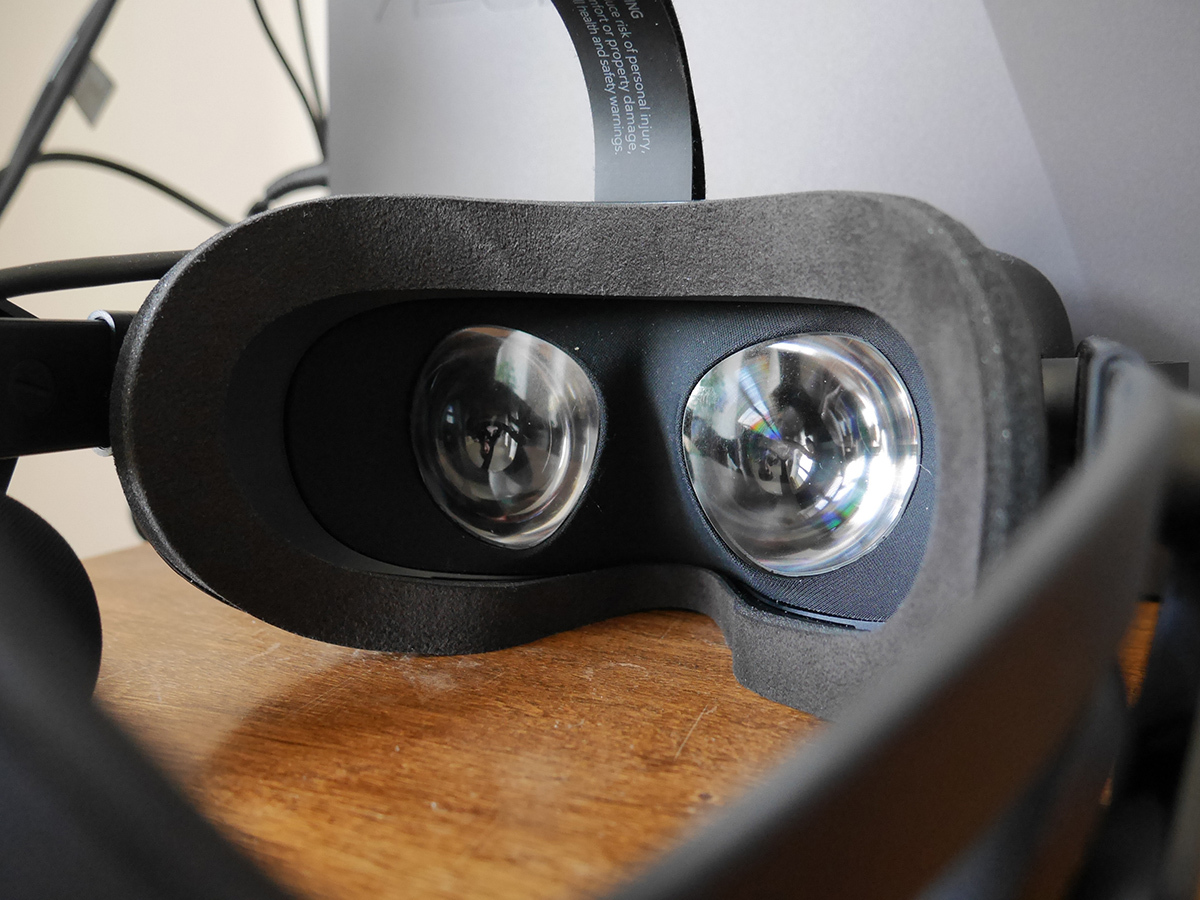
You’ll be impressed by the Rift’s visuals the second you start it up – the bright colours, deep blacks and sharp images are just what’s needed to trick your brain into thinking you’re really flying that jetpack through a cartoon cityscape.
It’s proof of how far Oculus has come since its prototype headsets, which used smartphone screens. The final Rift instead has twin OLED displays, each with a full HD 1080 x 1200 resolution. Worried about bringing up your breakfast with motion sickness? The headset’s 90Hz refresh rate is designed to stop exactly that from happening as a whopping 233 million pixels fly past your eyes every second.
Although the Rift doesn’t entirely fill your vision, the lenses still take up up most of your view, and when your eyes are telling your brain that you’re floating in zero gravity through a half-destroyed space station, you tend not to notice anything else but the screen. Glasses and contact lens wearers have to contend with light reflections a bit, but only when looking at mostly black screens with just one or two light sources.
Peer very closely when there’s a break in the action and you’ll be able to spot the pixel grid. It’s a reminder that you aren’t actually standing in a moonlit forest clearing, but you quickly forget that once a 50ft tall robot walks right in front of you.
If Rift’s visuals have a weak link right now, that’s 360-degree videos. They can look pretty fuzzy and low-resolution, with animated movies appearing a lot sharper. But only because the camera hardware isn’t quite up to par yet. Once that catches up with Oculus’ ambition, there’ll be no problem.
Super-awkward › I watched virtual reality porn in public
SAFE IN SOUND
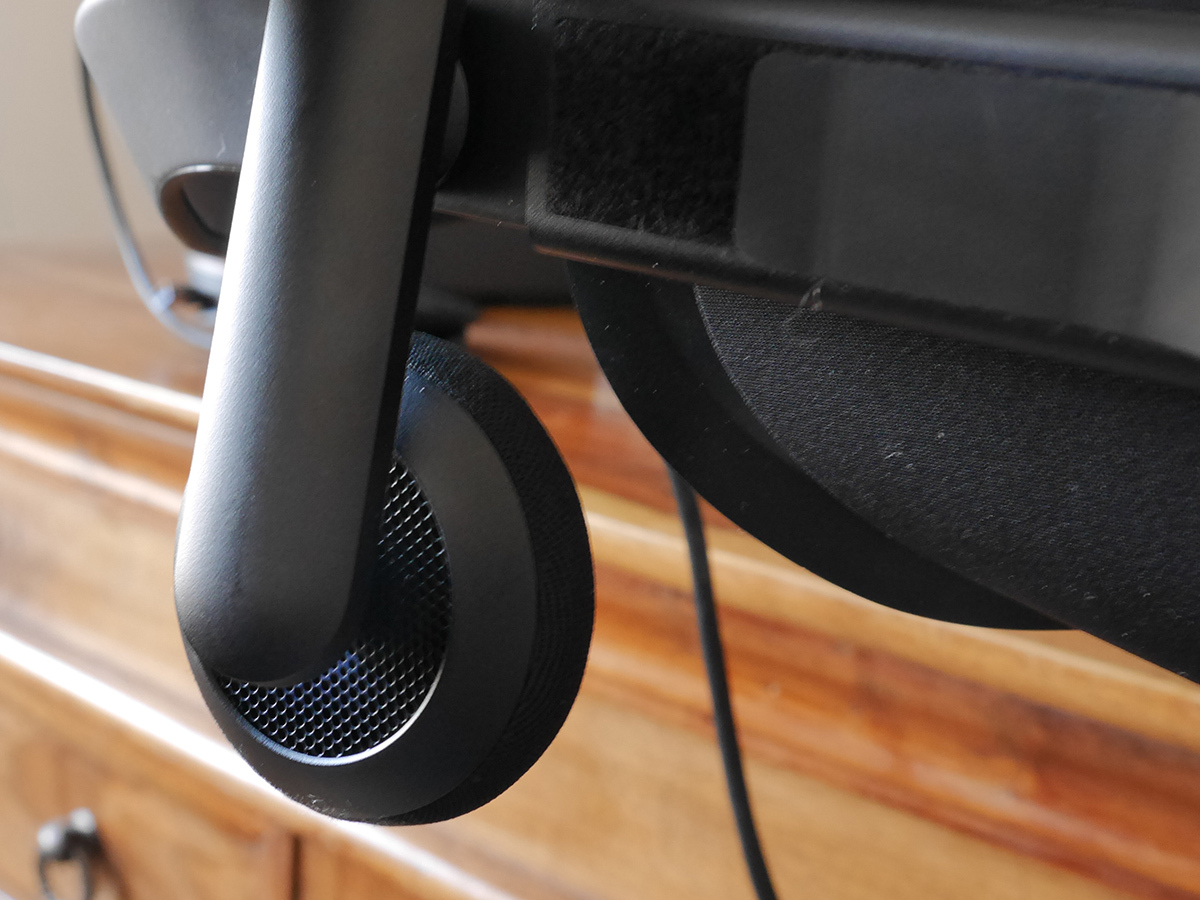
So that’s how you can see virtual reality but, to make this experience feel truly convincing, the Rift’s audio has to match its visuals. Hiding in a cupboard while a psycho killer stalks you is pretty tense as it is, but hearing the footsteps get closer and closer in 3D space is enough to have you ripping off the headset in a cold sweat.
That’s why the Rift has a built-in set of headphones that are hooked on to the headband and droop down like a pair of dog ears. They tilt and rotate to rest comfortably against your head, so it doesn’t feel like your ears are going to fall off after a long play session, and the breathable fabric pads won’t roast your lugs, either.
OK, so you don’t get perfect sound isolation, but I still had to flip the headphones away from my ears to hear my housemates’ puzzled questions when they walked in on me using VR for the first time.
“Yes! It’s for work. No! You can’t have a go.”
How do they sound, though? Pretty damn good, in my experience. They have a subtlety and precision I wasn’t expecting, but one that’s completely necessary to complete the illusion of VR. Shallow breathing that appears to come from behind you while you’re exploring a haunted house? Chilling.
Spacial sound makes all the difference. I span around in my seat the first time a missile flew past me in EVE: Valkyrie. Not every game and demo supports it right now, but in the ones that do, it’s incredible. Bass won’t blow you away, but everything sounded much cleaner compared to a boomy gaming headset.
Basically, you won’t need to worry about buying a pair of headphones to go with your Rift – it’s perfectly capable on its own. The built-in ‘phones have custom-built termination points, so you can ditch them for your own set of cans. Unless you’ve got a wireless headset, though, it’ll mean another cable running between you and your PC. Honestly, having to pat down your desk just to find your cans and put them on your head isn’t a great look.
WELCOME HOME
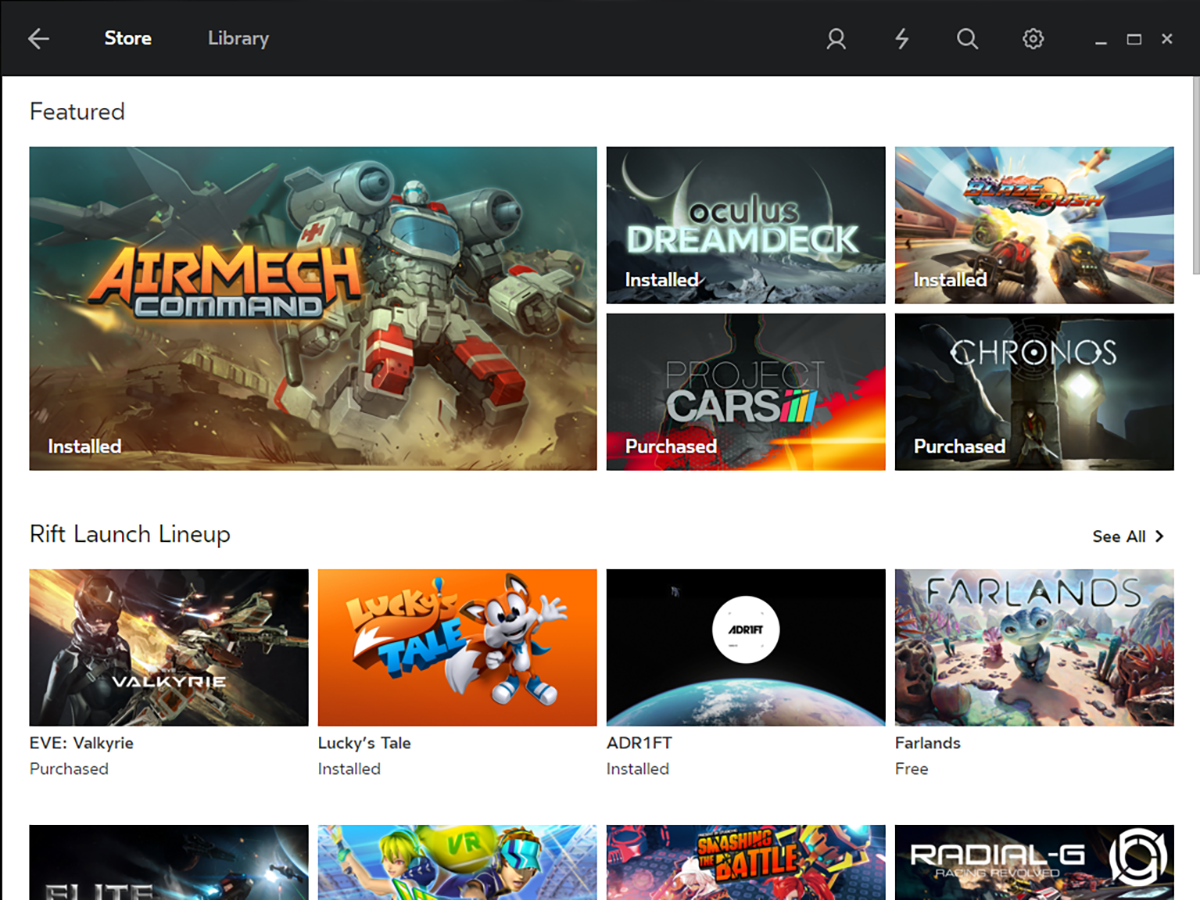
By now you’re probably wondering how to, y’know, play a game on the Rift? Again this is an effortless process.
Putting on the headset automatically launches Oculus Home, the one-stop shop for Rift-compatible games and video. It’s a bit like Steam; you can browse your library, see what your mates are up to, and download new games, all within VR.
Beyond the giant screen showing all your games, Oculus Home looks like a lavish open-plan apartment, complete with fireplace, Japanese water garden and massive skylights revealing trees with weird geometric cherry blossoms. It’s a shame you can’t get up and walk around, but it’s probably for the best; trying to sit on virtual furniture will only end up with you on the floor, feeling like a prat. Not that we’d know anything about this. Ahem.
At launch, the Oculus Store has plenty of choice. It’s nowhere near as well-stocked as Steam, naturally, but you’re guaranteed that everything will work out of the box – either with the controller or your keyboard and mouse. Speaking of Steam, there was no way to get Rift working with Valve’s platform ahead of launch: Oculus hasn’t released the software toolkit that supports the final version of Rift to all developers yet, just the ones releasing games in the Oculus store.
That means Valve’s SteamVR tool doesn’t recognise Rift, and won’t until the headset launches officially at the very least. Games that worked on Rift DK1 or DK2 aren’t compatible yet either, which instantly shrinks the potential launch line-up. We’ll update this review after launch to see how it works with Steam’s VR-friendly back catalogue.
Freedom to roam › HTC Vive hands-on review
TIME TO PLAY
Before you start to panic, don’t worry – the Oculus Store still has more than 30 VR games available at launch, along with animations, demos, 360-degree photos and video. So there’s plenty to put your headset through its paces.
Every headset comes with a free copy of cutesy, Mario-style platformer Lucky’s Tale. It’s more of a VR novelty than a must-play experience, though; you move the camera by tilting your head, and sometimes you have to look up or lean in to get a better view. Otherwise it plays just like any other platformer – it’s hardly something you’d pick to show a £500 new toy off to your mates.
I had a lot more fun with space combat dogfighter EVE: Valkyrie, which is also free to anyone who pre-ordered the Rift. It’s the most-hyped name in this headset’s launch line-up and that’s because it’s one of the few multiplayer games that lets you take on other Oculus owners. You’ve got complete freedom of movement, which is might seem like a recipe for motion sickness, but the incredibly detailed fighter cockpit creates an artificial horizon to help stop your stomach from churning.
It’s easily the best thing on the Rift right now, with some incredible 3D effects that really make you feel like you’re dogfighting in space. The first time you undock and get blasted out of the hangar and into the action, surrounded by colossal Capitol ships and space stations, is something you don’t forget in a hurry.
Despite this immense potential for sci-fi exploration, it was probably RPG Chronos that had me most impressed. You play a hero that has to save his land from an evil force by travelling through ancient dungeons. Stop me if you’ve heard this one before, Zelda fans. The difference here is that the dungeon only opens once a year, and if you fail, your character ages a year before he can try again. If you’re really bad at it, you’ll end up resembling Albus Dumbledore by the time you’re done.
BEST OF THE REST
There are plenty of smaller titles, too. Some feel little more than glorified demos at the moment, but that doesn’t mean they’re not brilliant fun. Playing Pinball FX 2 VR in an underwater arcade while sharks swim menacingly around you? Why not. Saving a race of alien teddy bears from extinction with some Lemmings-style puzzles in Fly To Kuma? That works too.
I loved kooky anime brawler Smashing the Battle; imagine Streets of Rage, only you’ve got an isometric view of the 1/10th scale action. It’s like someone brought Warhammer 40K miniatures to life around you – more of this, please.
As you might imagine, the horror titles were among the most affecting. Into The Dead might be little more than an endless runner, but when failure means getting up-close-and-personal with a hungry zombie, it’s still pretty tense. Want to get your mates involved? Bomb defusal party game Keep Talking And Nobody Explodes requires the player wearing the headset to describe the complex bomb in front of them, while everyone else has to decipher a ridiculously complex user manual in order to disarm it safely. It’s brilliant fun, and a great way to introduce VR to newbies.
Then there are the animated shorts and interactive movies that bring you along for the ride. Adorable animation Henry is an ideal first stop for VR newbies, while Lost is essentially like jumping into Disney’s The Iron Giant. It’s breathtaking stuff.
There’s a pattern running through the Oculus launch line-up; most games are designed for short-burst gameplay, rather than long sessions. There are a couple of exceptions (Chronos, EVE: Valkyrie and Elite Dangerous spring to mind) but for the most part it’s in and out in under an hour.
That’s probably a good thing right now; after a few days of constant play I had a thumping headache and my eyes were pretty sore. The things I do for work, eh? Compared to crashing out in front of a PC or PS4, I wouldn’t want to play in VR for long stints – at least until I’ve fully gotten used to it.
It’s difficult to tell whether short blasts or deep, multi-hour sessions are the future of VR; right now I think it’s the former, but once motion controls let you get fully immersed in the action, I can see longer games becoming the norm.
The PS4 headset › Sony PlayStation VR hands-on review
HARDWARE HEAVEN
Rift’s major downside is that you need one hell of a PC to run it. That’s true of any VR headset – at least until PlayStation VR arrives – because your computer’s graphics card has to work a lot harder for VR than it would to play the same game on a regular monitor. Not just because the resolution’s higher, but because it has to redraw the entire scene 90 times a second to stop you getting motion sick.
Oculus says an Nvidia GeForce GTX 970 graphics card is the bare minimum for VR. It’s what I have in my PC, and it did the job throughout my testing. There were a few more demanding titles that couldn’t run at maximum graphics, though. Project CARS can be a real challenge once you turn up the settings, but it defaulted to a perfectly playable frame-rate without looking too ropey in the process.
The best-case scenario for anyone with an underpowered rig would be a £300 GPU upgrade, but a full PC with enough power for the most demanding VR games could put a £1000 or more dent in your wallet. If that all sounds a little too expensive for you, it might be better off waiting for PlayStation VR; that’s set to cost £350 when it arrives in October, so even if you haven’t got a PS4 yet you’re only looking at a £600 total spend.
OCULUS RIFT VERDICT
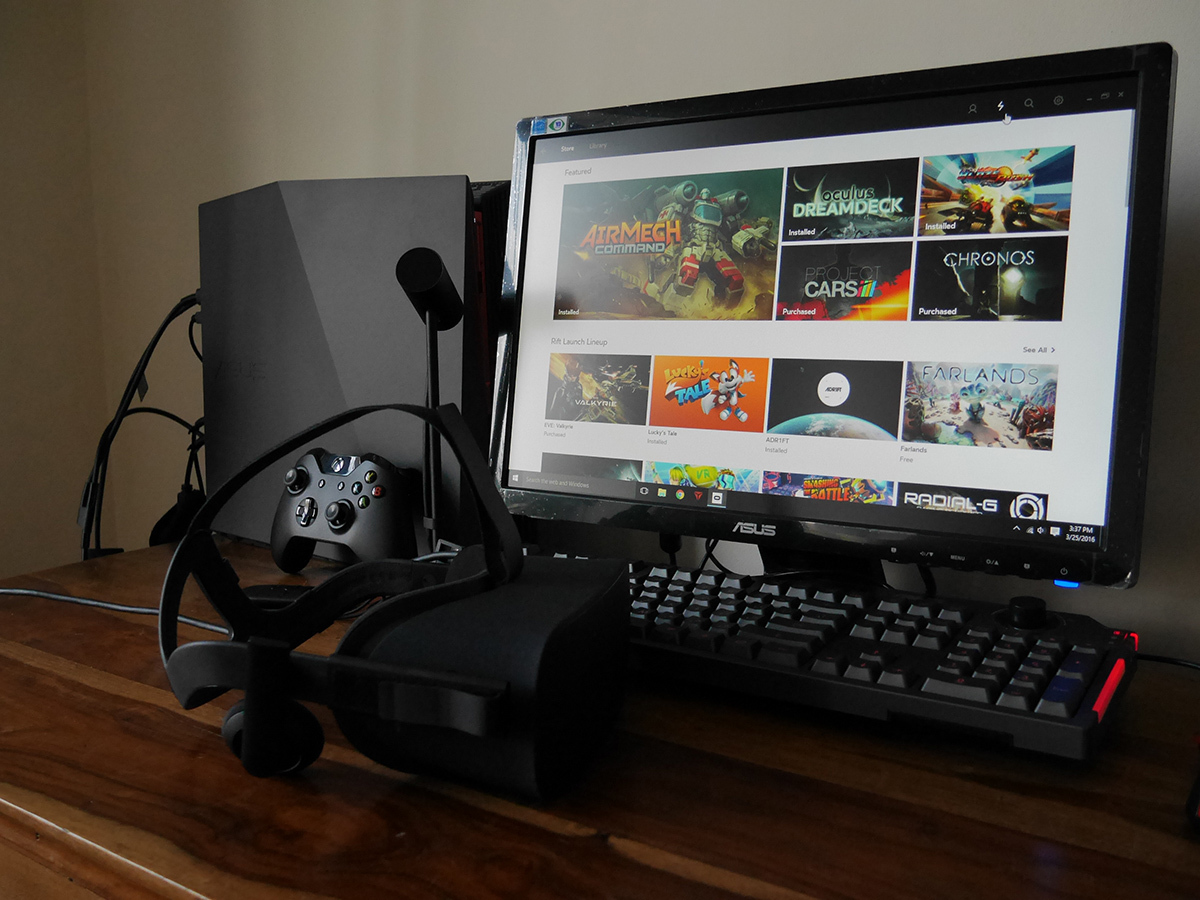
The Rift is much more than an impressive debut for virtual reality gaming: it’s a sign of things to come. At long last the hardware is refined, there’s a diverse selection of games and experiences in the Oculus store, and developers are hard at work on big-name titles. It’s only going to get better from this point.
That first time you pull on the headset still feels more like magic than technology, and it’s just as much fun watching friends getting their first taste of VR. You might not have thought you could feel sympathy for a cartoon hedgehog, but step into his house and you’ll want to give him a big hug – spines be damned.
None of which means that it’s perfect. It’s expensive, for starters – even more so if you don’t already have the hefty PC you’ll need to run it on. Plus, the Xbox One controller just feels like a stop-gap until the Touch controllers arrive around autumn time. If you pick up a Rift now, you’ll still have a headset that can transport you to a litany of wondrous digital worlds – it just won’t be as absorbing as it can be later this year.
